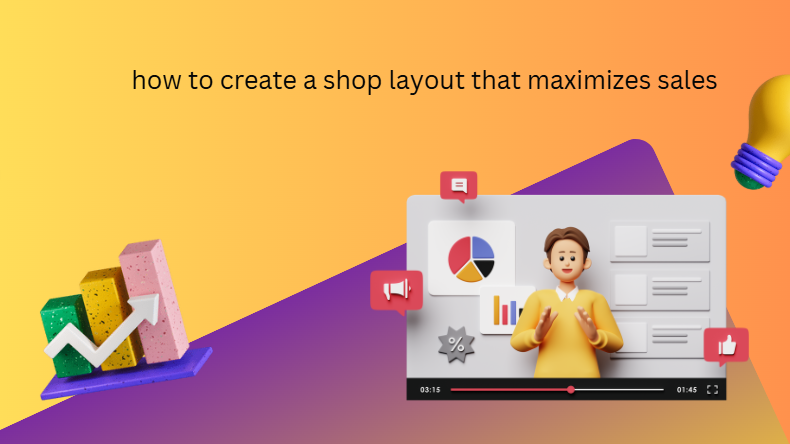The first step in creating
a shop layout that maximizes sales is to focus on the store entrance and first impressions. The entryway sets the tone for the entire shopping experience and influences whether customers feel welcomed or shop overwhelmed. A visually appealing and clutter-free entrance invites customers inside and encourages them to explore further. Placing best-selling or high-margin products near the entrance can capture immediate attention and stimulate interest. Additionally, clear signage and lighting around the entrance help to communicate brand identity and promotions effectively. Ensuring an inviting entrance not only draws customers in but also starts building a positive shopping mood that can lead to increased sales.

Another crucial element to consider
when designing a shop layout that maximizes sales is the use of traffic flow and store navigation. Effective traffic flow means guiding customers naturally through the space without confusion or congestion. Popularly, retailers use the right-hand turn rule, where shoppers typically turn right upon entering, so placing key product categories in that direction can maximize exposure. Creating distinct pathways with enough space allows customers to browse comfortably while encouraging them to pass through multiple product areas. Strategic use of focal points, such as display tables or end caps, can also capture attention and prompt impulse purchases. Thoughtful traffic management improves the overall shopping experience and significantly impacts sales volume.
Product placement and zoning play
a vital role in a shop layout that maximizes sales. Grouping related products together, known as product zoning, helps customers find what they need quickly and encourages complementary purchases. For example, placing accessories near clothing or batteries next to electronic gadgets can prompt additional sales. The height and positioning of shelves also matter; eye-level products tend to sell better, so it’s wise to place high-margin or popular items there. Seasonal and promotional items should be positioned in high-traffic zones for maximum visibility. By carefully planning where and how products are displayed, shop owners can influence purchasing decisions and increase the average transaction value.
an efficient checkout area
essential in a shop layout that maximizes sales, as it represents the last interaction customers have with the store. The checkout counter should be easy to find but positioned to avoid blocking traffic flow. Including small, low-cost impulse items near the checkout can boost last-minute purchases. The design should also minimize wait times, with enough space for queuing and efficient service. A pleasant and organized checkout experience leaves a lasting positive impression and encourages customers to return. Investing in a well-planned checkout zone ensures that the final step of the sales journey contributes effectively to overall revenue growth.
In summary, creating a shop layout that maximizes sales involves multiple design strategies aimed at enhancing customer experience and guiding purchasing behavior. From making a strong first impression at the entrance to designing smooth traffic flow, thoughtful product placement, and a functional checkout area, every aspect plays a part in driving sales. Retailers who invest time and resources in optimizing their store layout can expect not only increased sales but also higher customer satisfaction and loyalty. Understanding and applying these principles will help any shop stand out in a competitive market and achieve sustainable growth.